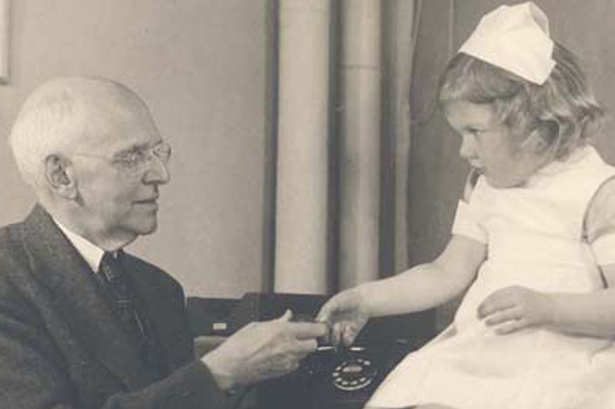Elliot Proctor Joslin is considered a pioneer in the treatment of diabetes. His approach to diabetes – giving the patients responsibility for their own care – was unique at the time.
He is also the founder of the Joslin Diabetes Centre, but why did Joslin have such a big impact on diabetes management?
We look at the story of how a young doctor pursued the field of diabetes after leaving medical school, becoming the first to specialise in it, and saw over 50,000 patients during his career.
Joslin’s orgins
Joslin was born in 1869 in Oxford, Massachusetts, United States. At that time there was little treatment for diabetes, which was considered a fatal disease. The discovery of insulin was still 53 years away, with diabetic patients only expected to survive for a year.
Joslin was educated at Yale University and Harvard Medical School, during which time his aunt was diagnosed with diabetes, reportedly type 1. This inspired his research into the disease, with his data going on to be published as The Pathology of Diabetes Mellitus. For this, Joslin won the Boylston Society prize.
Joslin set up his private practise in 1898 in Boston. That same year, his aunt died due to diabetes complications, while his mother, Sarah, was diagnosed with diabetes one year later. Dlife.com report this was type 2 diabetes.
Through a combination of meal planning, exercise and food management – and with the help of her son – Joslin’s mother lived for 10 years after her diagnosis. At the time this was unheard of and it shaped Joslin’s research into diabetes.
A new approach
The progress of his mother led Joslin to focus on how a restricted-carbohydrate diet, vigorous treatment and regular exercise could treat diabetes.
In 1918, he published Diabetic Manuel – for the Doctor and Patient. The book revolutionised how a patient could control their diabetes instead of feeling overwhelmed and resigned to a quick death.
Following the discovery of insulin in 1922, Joslin’s first patient to receive insulin injections gained weight, after previously losing 70 pounds, and lived for another 25 years.
Joslin emphasized a three-pronged method of diabetes management: diet, exercise and insulin.
He sent nurses out into the community to instruct people with diabetes how they could be responsible for their own care by using these three management aspects.
Greater understanding of diabetes
As the use of insulin became more prevalent, Joslin’s practise became the leading diabetes clinic in the world.
Upon hiring Priscilla White, a classification for gestational diabetes was devised and White tended to all the clinic’s pregnant women with diabetes.
Joslin and his staff developed the first hospital blood glucose monitoring system in 1940. He was subsequently elected as the American Diabetes Association’s (ADA) first honorary president.
Upon highlighting diabetes as a serious public health issue, Joslin challenged the government after World War II to conduct a study in Oxford. The results, which came after a 20-year study period, confirmed Joslin’s belief that diabetes was becoming an epidemic. This established diabetes as a public health issue.
Victory medals
Aside from being the first recipient of the ADA’s Banting Medal for Scientific Achievement – named after Frederick Banting, the co-creator of insulin, Joslin also developed medals to mark the success of patients.
The Victory Medal was set up in 1947 to celebrate patients that lived with diabetes for 25 years and had no health complications regarding their kidneys, eyes and blood vessels.
Joslin also developed a medal that read “A Scientific and Moral Victory”. This was for patients who outlived their normal life expectancy.
Leaving a legacy
In 1956, despite being into his eighties, Joslin moved his practise into what is known now as the Joslin Diabetes Centre. It remains a leading worldwide diabetes clinic which focuses on patient education, treatment and diabetes research.
With his wife Elizabeth, they had three children: Mary, Allen and Elliot Junior. Allen went on to work as a doctor at his father’s clinic.
When Joslin died in 1962, he had seen over 50,000 patients. In 1993, his belief that vigilant control was crucial in treating diabetes was confirmed by the Diabetes Control and Complications Trial.
This blog was adapted from joslin.org and dlife.com
Picture credit: joslin.org





